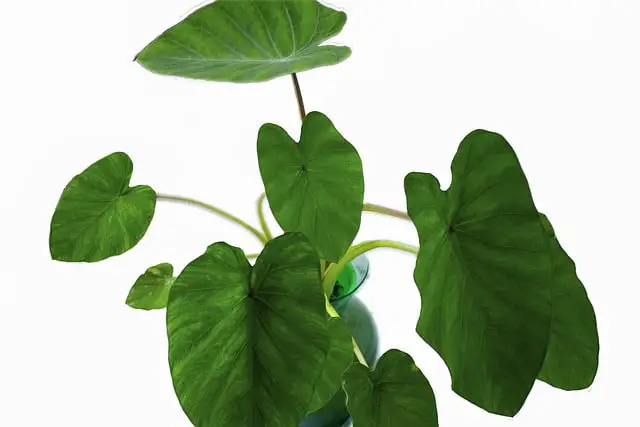If you’ve been dreaming about filling your garden (or home) with large leaf “elephant ear” plants – oversized, vibrant, often multicolored plants – but have had a tough time really growing them to their full potential you want to check out the inside info we share below.
Believe it or not, elephant ears are relatively simple and straightforward to grow when you pair them with any of the top 10 elephant ear companion plants we highlight in this detailed guide.
Pick and choose the right plants for your growing conditions and watch as your elephant ears really take off! Uncover the secrets of growing vibrant and healthy elephant ears with the help of the best companion plants in this comprehensive guide.
Top 10 Elephant Ear Companion Plants
Other companion plants for your garden:
1. Alliums
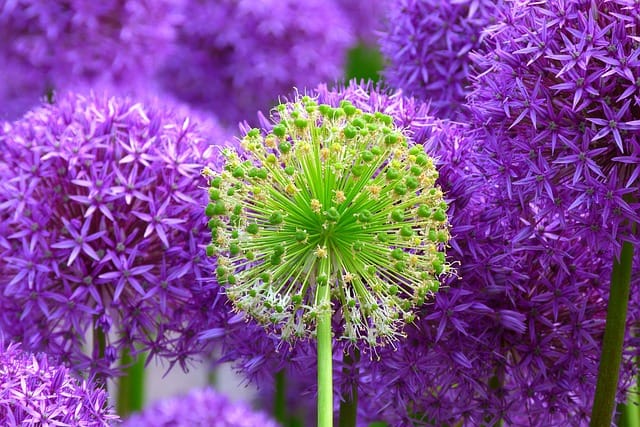
One of the challenges you’ll have to contend with when growing elephant ears outdoors are keeping all kinds of insects and bugs away from the delicate (but colorful and vibrant) leaves on these plants.
By planting alliums nearby your elephant ears, though, you’ll be able to keep those nasty little garden invaders at Bay without a whole lot of headache or hassle.
Onions and garlic both pump out a pungent aroma that insects absolutely hate, sort of acting like an invisible “force field” that repels pests on a 24/7 basis.
Best of all, the same soil conditions that grow big and beautiful elephant ears work wonders for alliums crops you have tucked into the same soil. Plant them close by and you’ll have nothing to worry about!
Mature Size: 5 inches to 4 feet
Flowering: Some
Key Feature: Pungent aroma and flavor
2. Bee Balm
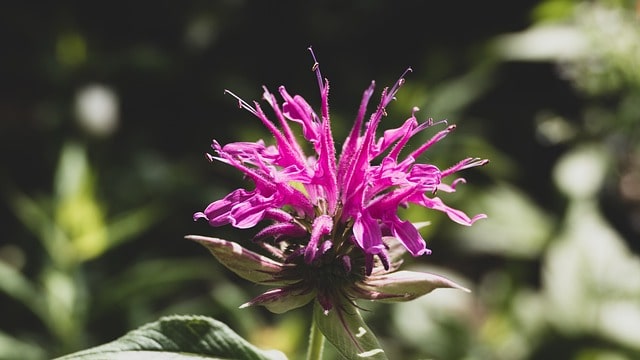
This amazing little companion plant does basically the exact opposite of alliums – luring insects rather than repelling them – but that’s it’s “secret weapon” and why you want to make sure that it is planted close to your elephant ears.
As you might have guessed already, bee balm is a major attractor for pollinators. Not just honeybees (and other kinds of fees, for that matter), but butterflies as well.
These pollinators are hugely important for keeping your garden – and your elephant ears – happy and healthy, and the more pollinators you’re able to bring into your garden the better results you are going to see.
Like alliums, this plant loves the same kind of soil conditions that elephant ears thrive in (right down to the pH).
You can plant bee balm right in with your elephant ears and not suffer any ill effects, either. The root system isn’t as deep in the plants will grow as tall as elephant ear – and they won’t compete for the same resources, either.
Mature Size: 4 feet
Flowering: Yes
Key Feature: Powerful pollinator attractor
3. Begonias
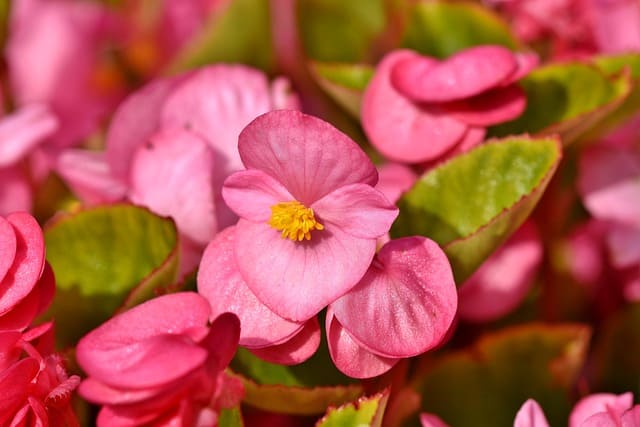
Begonias aren’t one of our top 10 elephant ear companion plants just because they are so beautiful (though that certainly helps), but also because these plants work similarly to bee balm in that they act like a tractor beam for pollinators.
Pollinators are a big part of the “invisible army” in your garden that can either help or hinder the plants that you have decided to grow. It’s almost impossible to have too many pollinators working for you, which is why it’s a good idea to have begonias mixed in amongst your elephant ear.
Mature Size: 12 inches
Flowering: Yes
Key Feature: Bright, bold colored flowers
4. Cardinals
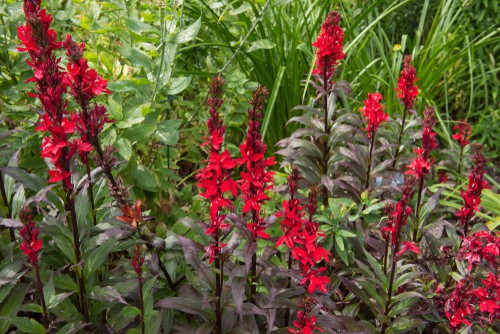
Cardinal flowers are a bit of a unique companion plant to be sure, if only because they really do well with a lot of shade and with a decent amount of moisture.
Elephant ears, on the other hand, don’t really need a ton of shade and aren’t the thirsty is plants on the planet – but that’s precisely why these two plants work so well with one another.
These beautiful flowers are able to almost stowaway underneath elephant ear leaves, soaking up the little bit of sunshine that makes it past those big green ears without any negative effects whatsoever.
Elephant ears will also shade the ground that cardinal flowers are growing and, helping to retain moisture and keep these thirsty plants well hydrated.
Mature Size: 3-4 feet
Flowering: Yes
Key Feature: Brilliant, rich red color
5. Chamomile
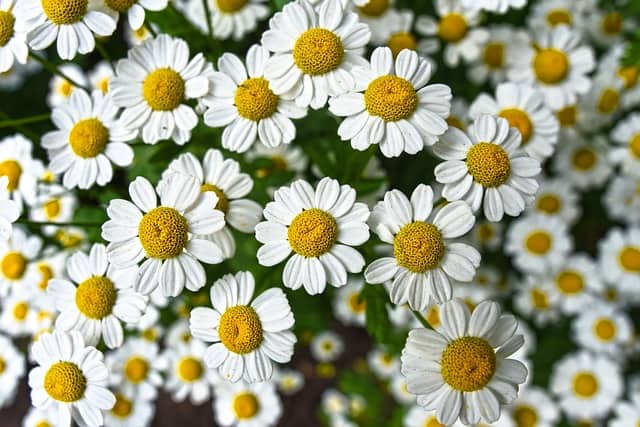
Sometimes called the “medicine of the garden”, chamomile is beloved by gardeners growing elephant ear (and a whole range of other plants, for that matter) because of the antifungal and antibacterial properties it brings to the rest of the plants grown in close proximity.
Chamomile can grow in a wide range of environments, but it really likes to grow wide open with plenty of sunshine just the same as elephant ears. This means you’ll be able to grow these two plants side-by-side without any real issue whatsoever.
The big benefit to growing chamomile with your elephant ears, though, are the antifungal and antibacterial benefits your elephant ears receive. Chamomile fights back against the diseases that would have happily overtaken your elephant ears and destroyed them from the inside out.
Mature Size: 8-24 inches
Flowering: Yes
Key Feature: Natural oils can be used as natural healing agent
6. Chives
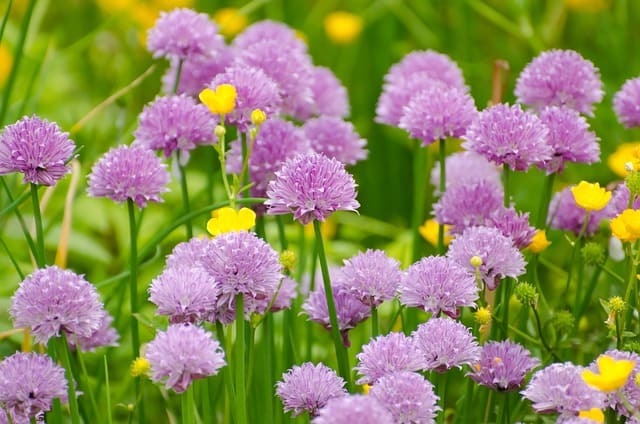
Chives work really well with elephant ears, protecting them from invasive spider mites that can take over a field of elephant ear faster than you ever would have thought possible.
Elephant ears are going to benefit from chives in the pollination department as well. Pollinators will bounce from one plant to the next, cross pollinating a little bit with every trip.
There is a bit of a wrinkle growing chives as a companion plant, though. Sometimes chives like to get really competitive for soil resources, especially if they are allowed to grow recklessly and out of control.
Keep an eye on your chives, cut them back as necessary, and you shouldn’t have much to worry about.
Mature Size: 12 inches
Flowering: Yes
Key Features: Light onion flavors and aroma
7. Elephant Ears
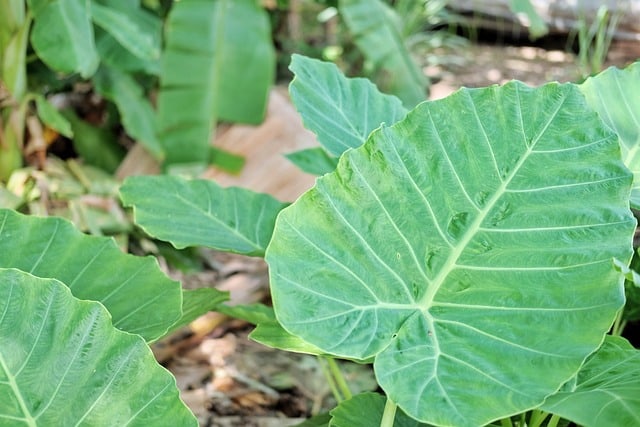
Believe it or not, other varieties of elephant ears (a bit of an umbrella term for plants with these big, multicolored, vibrant leaves) make perfect companion plants, too.
You’ll want to do a little bit of research and due diligence to make sure that you are mixing and matching the right elephant ears together with one another, but it’s really challenging to mess this up.
Mature Size: 15-20 inches tall, 8-10 inches wide
Flowering: Yes
Key Features: Gigantic, vibrantly colored heart shaped leaves
8. Ferns
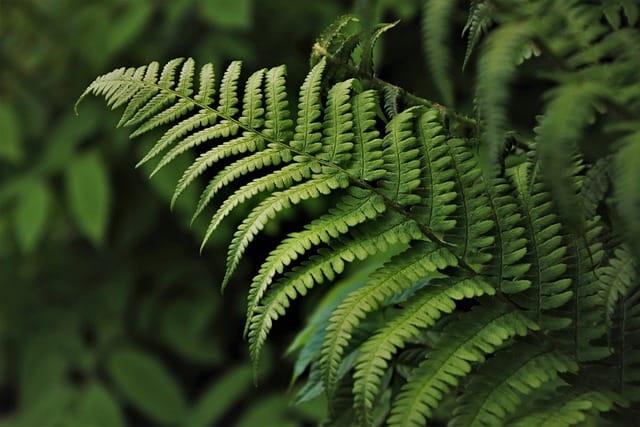
While there are some limited benefits of growing ferns alongside your elephant ears, there are some major aesthetic benefits you’ll enjoy – which is exactly why these two plants are so often put together with one another outdoors.
Ferns are easy to manage, aren’t going to fight with your elephant ear over resources, and generally do well with all kinds of soil conditions.
Mature Size: 12 inches to 6 feet
Flowering: No
Key Features: Compliment elephant ears visually
9. Lemongrass
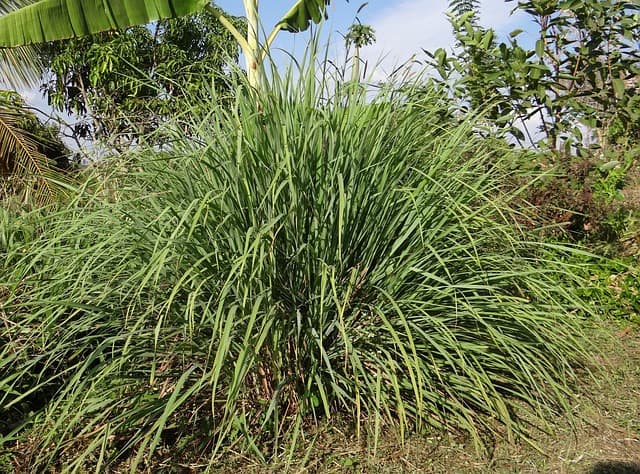
Lemongrass does a great job keeping spider mites away from your big leafy plants and you should consider putting these in and around any elephant ears you want to thrive.
It doesn’t hurt that lemongrass is also pretty toxic to plant eating mammals that would crunch and much their way through your elephant ears. You get passive protection with the added benefit of having crops of lemongrass to harvest later in the year, too.
Mature Size: 3-5 feet
Flowering: Yes
Key Features: Lemony smell and citrus flavors
10. Rosemary
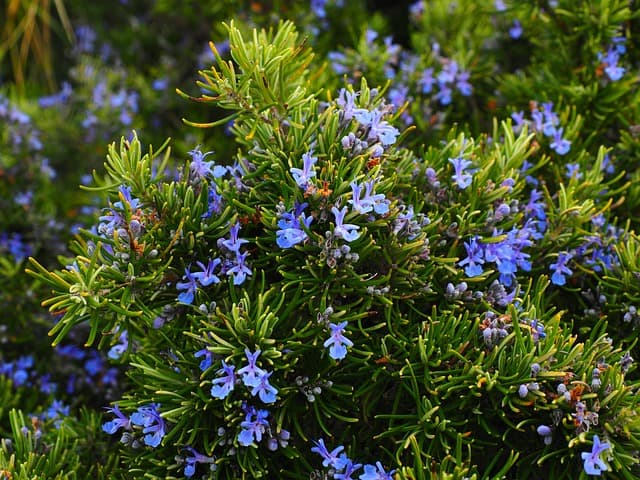
It’s a good idea to grow rosemary as a companion plant in a pot and not in the same soil that your elephant ears are growing in. But you’ll still want to keep these plants in close proximity to one another.
Rosemary will not do well if you tuck these plants underneath the shade of the elephant ears themselves. Rosemary really likes to soak up the sunshine.
Stick your rosemary companion plants a couple of feet away from your elephant ears and you shouldn’t have anything to worry about – all while reaping the insect, slug, and snail repellent properties of this herb at the same time.
Mature Size: 4-6 feet
Flowering: Yes
Key Features: Produces essential oils, can be used as an herb in cooking
Closing Thoughts
Finding the right plants to grow next to your elephant ears can sometimes feel like a bit of an uphill battle.
You don’t want to make the wrong move and plan something like mint or potatoes, for example – two plants that will rob the resources and nutrients elephant ears need to grow and choke them out before they even get a chance to establish themselves.
Use the info we shared above about the top 10 elephant ear companion plants, though, and you’ll be able to shortcut your research significantly. Anyone of the 10 we highlighted earlier (or any combination of the 10, for that matter) will give you great results!
Frequently Asked Questions
Are elephant ears toxic to people and pets?
As long as you aren’t eating large quantities of elephant ear leaves you don’t have anything to worry about. These plants (the leaves and the stems alike) can have toxic properties, though – so it’s a good idea to keep these plants out of the mouths of children and pets as much as possible.
What conditions are best for elephant ears?
Elephant ears grow really well in Zones 10 and 11, growing zones that are quite a bit more on the warmer side of things – and as close to the humid, hot climates of Southeast Asia where these plants grow natively.
You can, though, grow elephant ears indoors (even without a greenhouse) in pots if you’d like.
Do I have to replant elephant ears every year?
As perennial elephant ears have the potential to grow back year after year, though they might need a little bit of babysitting (maybe even some strategic overwintering) if they are grown outdoors in less than picture-perfect climate environments.

Hey, I’m Lisa and I’ve been an avid gardener for over 30 years. I love writing, talking and living in the garden! Feel free to connect with me on my socials below

